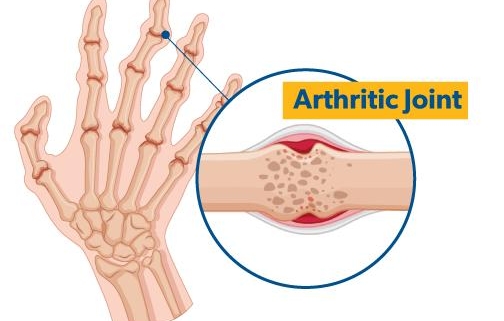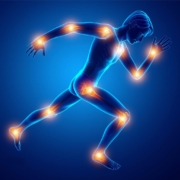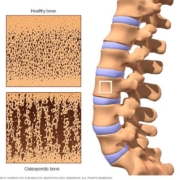5 Early Signs of Arthritis You Should Never Overlook
Arthritis is a condition that affects millions of people worldwide, often sneaking up on them without warning. While many associate the disease with older age, it can strike at any stage of life, making early detection crucial for effective management. In this listicle, we’ll explore 5 early signs of arthritis you should never overlook. By familiarizing yourself with these subtle indicators, you can empower yourself to seek timely medical advice and potentially slow the progression of the disease. Whether it’s a persistent ache or an unusual stiffness, recognizing these symptoms could make all the difference in maintaining your mobility and quality of life. Read on to discover what to watch for and take your first step toward proactive health management.
1) Joint Stiffness: One of the earliest signs of arthritis can be persistent joint stiffness, especially after periods of inactivity or in the morning. If you find it takes longer to get moving after sitting or sleeping, it could be a red flag
One of the most telling signs that your body might be signaling trouble is persistent joint stiffness, particularly noticeable after periods of inactivity. Many individuals report feeling a sense of tightness or discomfort in their joints when they wake up in the morning or after sitting for long stretches. This stiffness can make simple tasks, like getting out of bed or standing up from a chair, seem daunting. If you find yourself needing extra time to loosen up before you can move freely, it’s essential to pay attention to this early warning sign.
Joint stiffness often goes hand-in-hand with inflammation, which can contribute to pain and decreased mobility. It’s important to recognize that this symptom may not be limited to just one area; it can affect multiple joints throughout the body. Consider keeping a journal to track your stiffness levels and any accompanying symptoms. This information can be invaluable when discussing your concerns with a healthcare professional. Some common factors that can exacerbate stiffness include:
- Weather changes: Cold or damp conditions can intensify stiffness.
- Activity levels: A sedentary lifestyle can lead to increased stiffness.
- Age: As we age, our joints naturally lose some flexibility.
2) Swelling and Inflammation: Noticeable swelling around your joints can be a key indicator of arthritis. If you see puffiness or feel warmth in areas like your knees, fingers, or wrists, it’s essential to pay attention to these changes
One of the most telling signs that your body might be trying to communicate a problem is noticeable swelling around your joints. This puffiness can manifest in various forms, often appearing in the knees, fingers, or wrists. The swelling may be accompanied by a sense of warmth in the affected areas, which can be a clear indication of inflammation. It’s important to recognize that this isn’t just a minor inconvenience; it could signify that your joints are under stress. Ignoring these changes can lead to more severe complications down the road, making it crucial to monitor your body’s signals closely.
When assessing swelling and inflammation, consider the following aspects:
- Duration: Is the swelling persistent, or does it come and go?
- Location: Are specific joints more affected than others?
- Accompanied Symptoms: Are there other symptoms, such as stiffness or pain, that accompany the swelling?
Recognizing these factors can help you determine whether a visit to a healthcare professional is warranted. Early intervention can make a significant difference in managing arthritis and maintaining your overall joint health.
3) Pain During Movement: Experiencing pain during regular movements, such as climbing stairs or gripping objects, might signal the onset of arthritis. This discomfort can be subtle at first, but it often progresses if not addressed early on
Experiencing discomfort during everyday activities can be a subtle yet significant warning sign of arthritis. Many individuals may dismiss this pain as a natural part of aging or everyday wear and tear, but it’s essential to pay attention to these signals. Activities that once felt effortless, such as climbing stairs or gripping objects, can become increasingly challenging as the condition progresses. Initially, the pain might only occur after extended use or at the end of the day, but over time, it may escalate into a more persistent issue that interferes with daily life.
Recognizing the specific movements that trigger discomfort can be crucial in identifying potential arthritis. Here are some common activities that may indicate the onset of this condition:
- Climbing stairs: A sharp or dull ache in the knees or hips when ascending or descending.
- Gripping objects: Difficulty or pain when holding utensils, tools, or even shaking hands.
- Sitting for long periods: Stiffness and discomfort when getting up after being seated for a while.
Tracking these patterns can help you and your healthcare provider make informed decisions about your health. If you notice that these movements are becoming increasingly painful, it may be time to consult a medical professional for an evaluation.
4) Decreased Range of Motion: If you find it increasingly difficult to fully bend or straighten your joints, this limitation could be an early sign of arthritis. A gradual loss of flexibility is not something to ignore, as it may indicate underlying joint issues
As we age, it’s common to experience some stiffness in our joints, but a noticeable decrease in your range of motion can be more than just a sign of getting older. If you find yourself struggling to fully bend or straighten your knees, elbows, or fingers, it may be time to pay attention. This limitation can stem from inflammation or damage within the joint, both of which are potential indicators of arthritis. Ignoring these early signs can lead to more severe complications down the line, making it crucial to consult a healthcare professional if you notice these symptoms.
To better understand the impact of decreased flexibility, consider the following factors that contribute to joint mobility:
- Inflammation: Swelling in the joints can restrict movement.
- Joint Damage: Wear and tear on cartilage can limit how far your joints can move.
- Muscle Weakness: Weak surrounding muscles can lead to reduced support and mobility.
- Stiffness: Morning stiffness or prolonged inactivity can worsen flexibility.
Recognizing these signs early can be pivotal in managing your joint health. Below is a simple table outlining common joints affected by decreased range of motion:
| Joint | Common Symptoms |
|---|---|
| Knees | Difficulty squatting or climbing stairs |
| Elbows | Challenges with lifting objects |
| Fingers | Struggles with gripping or holding items |
| Hips | Pain when walking or bending |
5) Fatigue and General Malaise: Unexplained fatigue or a general feeling of being unwell can also be associated with arthritis. If you feel unusually tired and it impacts your daily life, it’s worth discussing with a healthcare professional, as it may correlate with inflammatory conditions
Experiencing unexplained fatigue or a sense of general malaise can be a subtle yet significant indicator of underlying health issues, including arthritis. This fatigue is not merely a result of a busy lifestyle; it often feels profound and unshakeable, impacting your ability to perform daily tasks. If you find that your energy levels are persistently low, and you’re feeling more run-down than usual, it’s essential to pay attention. This fatigue can stem from the body’s inflammatory response, which is often present in various forms of arthritis, leading to a cycle of discomfort and exhaustion.
Additionally, this feeling of being unwell can manifest in various ways, such as:
- Chronic tiredness: A lingering sense of fatigue that doesn’t improve with rest.
- Difficulty concentrating: A foggy mind that makes it hard to focus on tasks.
- Muscle weakness: A noticeable decrease in strength that affects mobility.
Recognizing these symptoms is crucial. If you find that your fatigue is affecting your quality of life, consider discussing it with a healthcare professional. They can help determine if there’s a correlation with inflammatory conditions like arthritis and guide you towards appropriate management and treatment options.
Wrapping Up
As we wrap up our exploration of the early signs of arthritis, it’s clear that awareness is your best ally. Recognizing these warning signals can empower you to seek timely medical advice and potentially slow the progression of the condition. Remember, your body often whispers before it shouts—pay attention to those whispers. Whether it’s persistent joint pain, swelling, or stiffness, taking action early can make all the difference in your journey toward maintaining mobility and comfort. Stay informed, stay proactive, and prioritize your health. After all, a little vigilance today can lead to a more vibrant tomorrow. Thank you for joining us on this essential journey to understanding arthritis.










Leave a Reply
Want to join the discussion?Feel free to contribute!